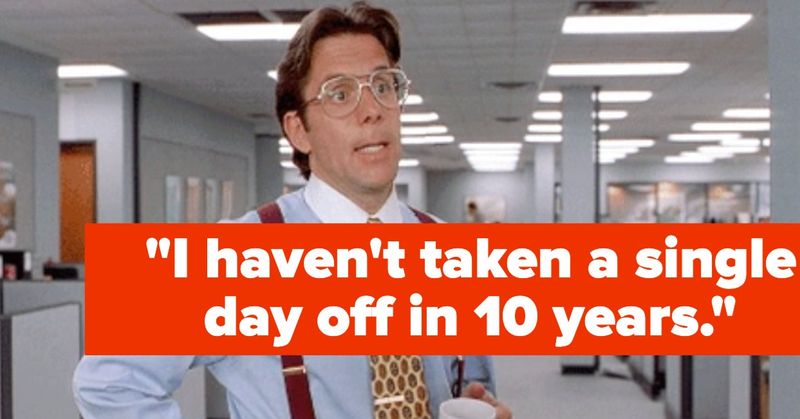As the generational gap widens, certain habits ingrained in Baby Boomers often clash with the values and lifestyles of younger generations.
While this diversity can bring about a rich tapestry of ideas, it can also lead to misunderstandings and frustrations. In this blog post, we explore 20 habits commonly associated with Boomers that younger people just can’t seem to get behind.
From communication styles to lifestyle choices, these habits are both intriguing and telling of the shifts in societal norms. Let’s dive into these differences and see what sets the generations apart.
1. Phone Calls Over Texts
For many Boomers, the personal touch of a phone call is irreplaceable. They grew up in an era where calling was the primary form of communication. However, younger generations prefer the convenience and speed of texting.
Texts allow for multitasking and provide an easy way to communicate in brief. Phone calls, on the other hand, demand full attention and can feel intrusive. They often require planning and interrupt whatever the person is doing.
This difference in communication preference is a common point of friction between the generations.
2. Sticking to Traditional Media
Boomers often rely on traditional media like newspapers and cable TV for news and entertainment. They trust these sources as credible and reliable. However, younger generations are increasingly turning to digital platforms for their news.
They prefer the immediacy and diversity of online content. Social media allows them to curate information and get updates in real-time. This shift highlights a broader change in how information is consumed.
The preference of Boomers for traditional media stands as a testament to the lasting impact of media they grew up with.
3. Reluctance to Use Technology
Many Boomers exhibit a reluctance to adopt new technology. They may find it overwhelming or unnecessary, preferring familiar methods. Younger generations, conversely, are digital natives, comfortable with evolving tech.
They often view technology as essential for efficiency and connectivity. While Boomers might see it as a hurdle, younger individuals see it as a bridge.
This technological divide can lead to frustration when Boomers are resistant to change. Encouraging patience and demonstrating technological benefits can help bridge this gap.
4. Face-to-Face Meetings
Boomers often prefer face-to-face meetings to discuss important matters. This habit stems from a time when in-person interaction was vital for business and personal connections. Younger generations, however, embrace digital alternatives like video calls.
These methods save time and offer flexibility. While Boomers value the personal connection of meeting in person, younger people prioritize efficiency.
This contrast reflects differing views on productivity and communication. Bridging this gap involves understanding the value of both approaches.
5. Preference for Paper Documentation
Boomers often prefer having physical copies of documents, viewing them as more secure and trustworthy. They grew up in an era where paper trails were essential. However, younger generations are inclined towards digital documentation.
They appreciate the convenience of accessing files anywhere, reducing clutter, and being eco-friendly. This difference can create tension in workplaces where digital efficiency is valued.
Bridging this gap can involve demonstrating the security and environmental benefits of digital options.
6. Formality in Attire
Boomers often adhere to formal dress codes, viewing them as a sign of respect and professionalism. Having lived through times where attire was linked to status, they see dressing up as essential.
Younger generations, however, prioritize comfort and individuality over formality. This clash is evident in workplaces and social settings, leading to misunderstandings.
Acknowledging different perspectives on attire can foster a more inclusive environment. Understanding the context of each situation can help navigate these differences.
7. Traditional Career Paths
Boomers often value traditional, stable career paths, having grown up with the notion of lifelong employment. They appreciate the security and predictability these roles offer.
Younger generations, however, are more inclined towards freelance opportunities and flexible work environments. They value autonomy and diverse experiences over stability. This generational divide reflects broader changes in the job market.
Encouraging dialogue about career aspirations and understanding different motivations can bridge this gap.
8. Physical Mail Preference
Physical mail holds a nostalgic value for Boomers, reminding them of handwritten letters and personal touch. They trust its tangibility. However, younger generations rely on digital communication, finding it faster and more efficient.
Email and messaging apps provide instant connectivity. This shift highlights the evolving nature of communication preferences.
Understanding the sentimental attachment Boomers have to physical mail can help foster empathy. Highlighting the advantages of digital options can bridge the generational gap.
9. Resistance to Change
Boomers often exhibit resistance to change, valuing stability and tradition. This mindset was shaped by the consistency they experienced growing up. Younger generations, however, are more adaptable, embracing change as part of progress.
They view change as an opportunity for growth. This generational difference can lead to friction as the pace of innovation accelerates.
Encouraging open-mindedness and highlighting the benefits of adaptability can help bridge this divide. Creating an inclusive environment where all voices are heard is key.
10. Cash Transactions
Boomers often prefer cash transactions, viewing them as straightforward and secure. They’ve lived in times when cash was king. However, younger generations favor digital payments for their convenience and speed.
Mobile wallets and contactless payments offer benefits like tracking spending and reducing the risk of carrying cash.
This difference in payment preference can lead to frustration in increasingly cashless societies. Educating Boomers on the security and benefits of digital payments can ease this transition.
11. Value of Home Ownership
Boomers often view home ownership as a crucial life milestone, symbolizing success and stability. Having grown up in a time when owning property was central to the American Dream, they value this investment.
Younger generations, however, may prioritize renting for flexibility and affordability. They often view mobility and freedom as more important. This generational divide highlights changing economic realities.
Understanding these shifts can encourage empathy and mutual respect. Discussing diverse housing aspirations can bridge this gap.
12. Preference for Chain Restaurants
Chain restaurants offer familiarity and comfort to Boomers. They’ve frequented these establishments for years, trusting their consistency. Younger generations, however, seek out local and unique dining experiences.
They value authenticity and innovation in cuisine. This difference reflects broader trends in food culture.
Encouraging dialogue about culinary preferences can foster understanding. Highlighting the benefits of both dining choices can bridge the generational gap in food experiences.
13. Written Checks
Writing checks remains a common practice for Boomers. It represents a tangible form of payment they trust. Younger generations, however, find this method slow and outdated.
They prefer instant digital transactions for their convenience and efficiency. This clash in payment preferences reflects the broader technological divide.
Demonstrating the advantages of digital payments, such as speed and security, can help transition Boomers away from checks. Understanding the attachment to traditional methods is also important.
14. Voicemail Use
Boomers often rely on voicemail to convey messages, valuing its personal touch. They grew up when answering machines were vital. Younger generations, however, find voicemails cumbersome.
They prefer text and voice messages for their immediacy and convenience. This generational gap in communication preferences can lead to misunderstandings.
Encouraging the use of alternative messaging methods can ease this divide. Understanding the value Boomers place on voicemails is also crucial.
15. A Strong Work Ethic
Boomers often pride themselves on a strong work ethic, believing in dedication and long hours. This mindset was shaped by a culture valuing hard work as a path to success.
Younger generations, however, prioritize work-life balance and mental health. They seek fulfilling careers without sacrificing personal well-being.
This difference in values can lead to differing perceptions of commitment and success. Encouraging discussions about work expectations and recognizing diverse approaches can bridge this gap.
16. Respect for Authority
Boomers often demonstrate respect for authority, shaped by hierarchical structures they grew up with. They value order and discipline.
Younger generations, however, lean towards egalitarian values, questioning authority and advocating for equality. This generational divide reflects broader social changes.
Encouraging mutual respect and understanding different perspectives can ease tensions. Discussing the benefits of both approaches can foster a more inclusive environment.
17. Handwritten Notes
Handwritten notes are cherished by Boomers, representing a personal touch and thoughtfulness. They grew up in an era where this was a primary form of communication.
Younger generations, however, prefer digital notes for their convenience and accessibility. This difference highlights changing communication preferences. Understanding the sentimental value of handwritten notes can foster empathy.
Encouraging the use of digital methods for practicality can bridge the communication gap.
18. Saving for Retirement
Boomers often emphasize the importance of saving for retirement through traditional methods, like pensions and 401(k)s. They value stability and security for their future.
Younger generations, however, explore diverse investment opportunities, including stocks and cryptocurrencies. They prioritize financial independence and flexibility.
This generational divide reflects changing economic landscapes. Encouraging financial literacy and understanding different investment strategies can bridge this gap.
19. Commitment to Institutions
Boomers often show commitment to traditional institutions, valuing their long-standing presence and credibility. They grew up in a time when institutions were central to community life.
Younger generations, however, are more inclined towards grassroots initiatives and innovation. They value adaptability and new approaches.
This generational divide reflects shifting attitudes toward authority and progress. Encouraging mutual respect and understanding different perspectives can foster collaboration.
20. Phone Books Usage
Boomers who grew up before the digital age tend to rely on phone books for finding contact information. For younger generations, this is an outdated chore, as they can simply search online databases or use their smartphones for instant results.
Using a phone book seems cumbersome and inefficient to those accustomed to digital convenience. Moreover, maintaining and storing these bulky books is viewed as unnecessary in modern households.
Younger people may not even own a phone book, relying entirely on digital tools for their communication needs.




















